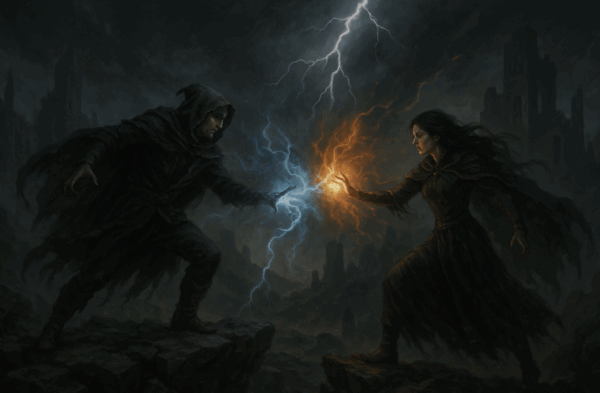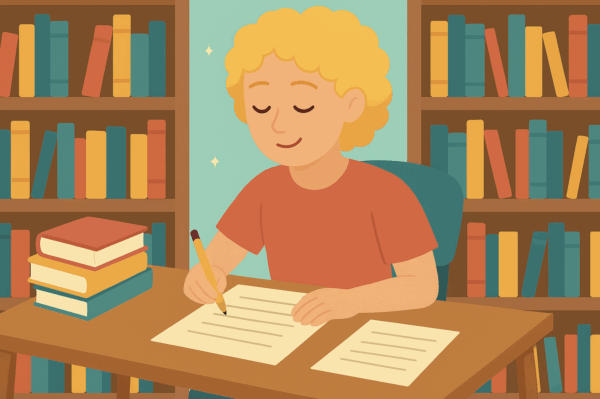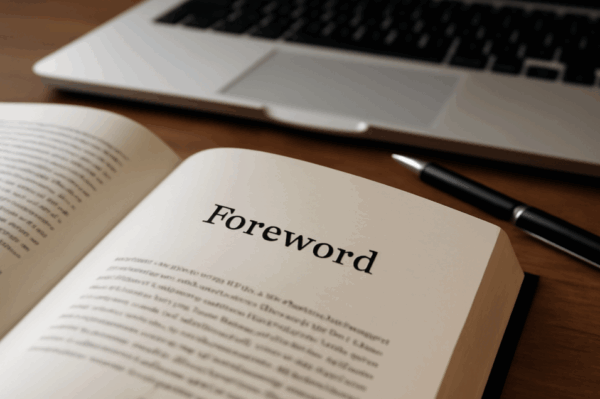Ever read a true story that felt more gripping than the latest bestseller? If so, you’ve probably already met one of the most versatile genres in the literary world—you just didn’t realize it had a name.
Let’s clear up the nonfiction meaning right away: it’s not just about facts and footnotes. Nonfiction simply means it’s based on reality—real people, real events, real impact. But there’s a particular kind of nonfiction that goes a step further. It doesn’t just present the truth; it performs it, using narrative techniques straight out of a novelist’s playbook. Think of it as the lovechild of journalism and creative writing, with a flair for drama and a taste for detail.
In this article, we’ll explore what this genre is, how it stands apart from fiction, and for those wondering what is literary fiction, we’ll touch on that too, and why these true stories told with style have become the go-to for readers craving both information and inspiration. Because sometimes, the truth doesn’t just set you free—it makes for a page-turner.
What Is Literary Nonfiction?
Let’s start at the beginning—what does nonfiction even mean? The nonfiction meaning is simple: it refers to any content based on real people, events, and facts. From history books to how-to guides, nonfiction is the genre that promises truth over imagination.
But within that big umbrella lies a more artful, nuanced corner: a form of writing that tells real stories with the emotional pull and structure of fiction.
So what makes literary nonfiction different from, say, a biography in a textbook or a scientific article? It’s all about how the story is told. This genre uses the tools of fiction—scene-building, character development, dialogue, narrative tension—but sticks to the facts. Think of it as truth, dressed in the best storytelling suit money can buy.
Instead of just reporting information, it seeks to immerse the reader. It turns facts into something you feel. A memoir doesn’t just recount what happened—it pulls you into the room. A piece of narrative journalism doesn’t just quote sources—it puts you at the heart of the investigation.
In short, it’s where reality gets a narrative upgrade—respecting the truth while borrowing the drama and beauty of fiction to make that truth unforgettable.
Types of Literary Nonfiction
While all narrative nonfiction shares a commitment to truth, the way that truth is delivered can vary widely. From intimate reflections to journalistic deep dives, this genre takes many forms—each with its distinct narrative flavor and storytelling approach:
- Memoir: Focuses on the author’s personal experiences, typically centered around a theme, era, or turning point. Memoirs are emotional, introspective, and rich in voice. They explore not just what happened, but how it shaped the writer.
- Narrative Journalism: Also called literary journalism, this form turns real-world reporting into gripping stories. It’s deeply researched and fact-checked, but told with the structure and suspense of a novel. Think long-form storytelling with a journalistic backbone.
- Personal Essay: These are short, reflective pieces where the author shares thoughts, questions, or observations about life. Often witty, poignant, or experimental, personal essays are more about thinking through a subject than telling a linear story.
- Travel and Nature Writing: These genres immerse readers in a particular place or environment. They combine firsthand observation with sensory detail, often weaving in philosophical or cultural insights.
- Biography and Autobiography (with a literary lens): Though these can sometimes lean academic, many are written with literary flair—deep character exploration, immersive scenes, and a focus on storytelling over strict chronology.
Each type offers a different path into truth, shaped by the writer’s purpose, voice, and lens on the world.
Examples of Literary Nonfiction
To fully grasp the power of literary nonfiction, it helps to look at real books that have made truth not only informative but utterly unforgettable. These works stand out not just for what they say but also for how they say it, transforming real experiences into compelling narratives that stick with you long after the final page.
Memoir – Educated by Tara Westover
Educated is more than just a memoir—it’s a testament to the power of knowledge and resilience. Tara Westover recounts her upbringing in a strict, survivalist family that rejected formal education and modern medicine. She didn’t set foot in a classroom until she was 17, yet she eventually earned a doctorate from Cambridge. What makes Educated a standout in literary nonfiction isn’t just the extraordinary journey—it’s how Westover captures the emotional complexity of leaving one’s roots behind. Her writing balances clear-eyed observation with lyrical introspection, turning a deeply personal story into a universal one about identity, family, and the cost of self-discovery.
Narrative Journalism – In Cold Blood by Truman Capote
Published in 1966, In Cold Blood is often credited with launching the true crime genre as we know it today. Truman Capote meticulously reconstructs the brutal 1959 murder of the Clutter family in Holcomb, Kansas. But instead of presenting it as a cold, factual report, he crafts a vivid, emotionally resonant narrative that delves into the psychology of both the victims and the killers. Capote’s blend of investigative journalism with novelistic detail—dialogue, suspense, and atmospheric description—was revolutionary. It blurred the line between reporting and storytelling and remains a defining work of literary nonfiction.
Personal Essay – The White Album by Joan Didion
Joan Didion’s The White Album isn’t a book in the traditional narrative sense; it’s a collection of essays, each one a finely-tuned lens into American life during the 1960s and ’70s. Her writing is razor-sharp, emotionally complex, and often haunting. In the title essay, she famously begins, “We tell ourselves stories to live,” setting the tone for a deeply introspective and culturally insightful collection. Didion weaves together personal memory, political commentary, and societal critique with a style that’s equal parts poetic and clinical. It’s literary nonfiction that feels personal, even when it’s tackling something much bigger than the self.
Nature Writing – Pilgrim at Tinker Creek by Annie Dillard
In Pilgrim at Tinker Creek, Annie Dillard turns a year of observations along a Virginia creek into a sweeping meditation on existence. Her prose dances between the scientific and the spiritual, describing the natural world in lush, cinematic detail while pondering life’s big questions. What elevates Dillard’s work into the realm of this genre is her voice—curious, philosophical, and deeply poetic. She doesn’t just catalog what she sees; she wonders about it, letting the reader journey through both landscape and thought. It’s nature writing that invites awe, not just for the world outside, but for the mind that observes it.
These books exemplify what happens when truth is told with artistic intention. Each title transforms real-life material into something immersive, meaningful, and deeply human, proving that literary nonfiction can rival fiction in beauty, complexity, and emotional power.
What Sets Literary Nonfiction Apart
In the vast literary landscape, this genre carves out a unique space between just the facts and pure imagination. It doesn’t merely inform—it captivates. What sets it apart is its dual commitment: staying true to real events while embracing the artistry of storytelling. And while it’s often compared to literary fiction, it’s important to understand what is literary fiction to truly see the contrast.
Here’s how it stands out from its nonfiction and fiction neighbors:
1. Truth Meets Technique
Unlike straightforward nonfiction, such as manuals, reports, or academic writing, narrative nonfiction uses literary devices typically found in novels. We’re talking about:
- Scene-setting
- Dialogue
- Character arcs
- Symbolism
- Mood and tone
These techniques bring real stories to life, making them emotionally resonant and memorable without sacrificing accuracy.
2. A Strong Narrative Voice
Literary nonfiction is often intensely voice-driven. Whether it’s the introspective tone of a memoirist or the sharp observations of a cultural essayist, the how is just as important as the what. The narrator isn’t hiding behind the facts—they’re part of the experience, guiding the reader through it with clarity and personality.
3. Emotional Depth and Reflection
While traditional nonfiction might present facts objectively, narrative nonfiction often invites readers into the author’s inner world. It explores not just events, but what they mean. Themes like identity, memory, trauma, and transformation are often central, and the genre doesn’t shy away from ambiguity or nuance.
4. Structure That Serves the Story
Forget rigid outlines or chronological formats—narrative nonfiction often plays with structure. Flashbacks, fragmented timelines, braided narratives, and unconventional formats are all fair game if they help convey emotional or thematic truth more effectively.
In essence, what sets literary nonfiction apart is its ability to inform, move, and enthrall. It proves that reality isn’t just worth documenting—it’s worth telling beautifully.
Why Literary Nonfiction Is So Popular Today
In a world saturated with information, narrative nonfiction has emerged not just as a genre but as a cultural force. So why is it now that readers are devouring it more than ever?
1. The Age of Information Overload
With endless newsfeeds, think pieces, and social updates, people are exhausted by surface-level content. Literary nonfiction offers a deeper, more reflective experience. It’s an antidote to the scroll—a place where stories unfold with intention and purpose.
2. The Rise of Personal Voice and Identity Exploration
From Gen Z TikToks to Substack newsletters, today’s culture thrives on personal narrative. Readers are drawn to authentic voices telling real stories about identity, race, gender, trauma, and growth—core terrain for literary nonfiction.
3. Cross-Media Explosion
Thanks to the popularity of true crime documentaries, audio essays, and streaming biopics, literary nonfiction now has mainstream appeal beyond bookstores. These stories move effortlessly from page to screen and podcast, reaching broader, younger, and more global audiences.
4. A Push for Truth in a “Post-Truth” Era
In a time of media distrust and algorithm-driven echo chambers, literary nonfiction stands out for its earned credibility. It doesn’t just inform—it reflects. And it encourages readers to wrestle with complexity, ambiguity, and nuance rather than soundbites.
By focusing on real voices, real emotions, and real-world relevance, narrative nonfiction has found its moment. It doesn’t just satisfy curiosity—it feeds a cultural need for truth told with heart
Conclusion: Final Thoughts on the Genre
In a world where reality often feels stranger than fiction, this genre gives us the best of both worlds—truth with the emotional resonance of storytelling. Whether it’s a memoir that reshapes how we think about family or a piece of narrative journalism that grips us like a crime novel, it proves that fact-based writing can be just as powerful as the most imaginative fiction.
We’ve explored its definition, major forms, and some of its finest examples—and one thing is clear: literary nonfiction doesn’t just report what happened. It gives those facts shape, meaning, and soul. And when you understand what is literary fiction, it becomes even clearer how this genre delivers just as much artistry, only with the added weight of truth.
So the next time you choose your next read, don’t overlook the shelf marked “nonfiction.” You might just find a story that’s as real as it is unforgettable.
FAQs- Literary Non-Fiction
Q1: What is the nonfiction meaning in simple terms?
Nonfiction refers to writing that is based on facts, real events, and real people. The nonfiction meaning emphasizes truth over imagination, making it the opposite of fictional storytelling. It includes everything from memoirs to manuals, but when blended with literary techniques, it transforms into what we call literary or narrative nonfiction.
Q2: What are the 5 R’s of creative nonfiction?
The 5 R’s are key elements that define creative (and by extension, literary) nonfiction:
- Real life: It must be based on actual events or experiences.
- Reflection: The writer explores the meaning of events.
- Research: Factual accuracy is essential.
- Reading: Writers read widely to deepen their perspective and craft.
- ‘Riting (writing): Literary techniques are used to shape the narrative.
Together, these R’s ensure a blend of truth, depth, and storytelling
Q3: Is a memoir literary nonfiction?
Yes! A memoir is one of the most popular forms of literary nonfiction. It focuses on a specific period or theme from the author’s life, told through vivid scenes, introspection, and emotional honesty. The goal isn’t just to document events, but to explore how those experiences shaped the author.
Q4: What is the literary nonfiction point of view?
Most literary nonfiction is written in the first person (“I”) because it often involves personal experience, reflection, or immersion. However, third-person is also used—especially in narrative journalism or biography—where the writer observes or recounts events involving others.
Q5: Can literary nonfiction include dialogue?
Absolutely—as long as the dialogue is accurate or faithfully reconstructed. Writers often recreate conversations based on memory, interviews, or recordings. The key is that the dialogue must reflect what was actually said or likely said, not fabricated for dramatic effect.
Q6: What is the purpose of analytical nonfiction?
Analytical nonfiction aims to explain or interpret real-world topics using logic, evidence, and reasoning. Unlike literary nonfiction, which focuses on narrative and emotion, analytical nonfiction is more concerned with clarifying a subject, making an argument, or presenting a well-structured explanation.
Q7: What distinguishes literary nonfiction from expository nonfiction?
Expository nonfiction is structured to inform or explain, like textbooks, manuals, or encyclopedia entries. It’s factual but lacks storytelling flair. Literary nonfiction, on the other hand, uses voice, character, and scene to engage readers emotionally, not just intellectually.
Q8: Is literary nonfiction the same as narrative nonfiction?
They’re closely related and often used interchangeably. However, narrative nonfiction refers specifically to nonfiction told in a story format (beginning, middle, end), while literary nonfiction is broader—it can include narrative works, personal essays, and lyric forms that are more reflective or fragmented.
Q9: Does creative nonfiction have to be about yourself?Nope! While many creative nonfiction pieces are personal, the genre includes biographies, profiles, travel writing, and investigative journalism. What defines creative—or literary—nonfiction is how the story is told, not who it’s about.








